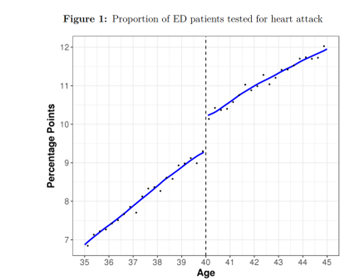Economists are prone to making hypotheses about other fields that make perfect sense to them and others outside of the field, but that can be easily refuted to anyone with an iota of relevant field-specific knowledge. And not just economists. This very sentence is, in fact, one such hypothesis.
But to get to the point: Alex Tabarrok at Marginal Revolution wrote a post titled Left Digit Bias in Medicine which excerpted his WSJ review of Random Acts of Medicine which is a book about “The Hidden Forces That Sway Doctors, Impact Patients, and Shape Our Health”, which is, believe it or not, part of the title. I hate, hate, hate what book titles have become. This is the literary equivalent of the Amazon product name trash recently discussed on ATP. SEO for books as an externality of Amazon’s dominance — who would have guessed?
Now, I haven’t read the book yet, and the WSJ is behind a paywall, so I only have the excerpt to go by, but it is long and it is sufficient. I won’t quote from it — 4th level of abstraction would be too much — but I will copy the figure and make a few comments. You should read the blog post itself, it is good.
ᔥMarginal Revolution and Random Acts of Medicine

- This is the biggest and the most obvious regression discontinuity I have seen, and it has a reasonable explanation. Kudos.
- Age is plotted as a continuous variable. This is not how doctors see the patient’s age in their medical record. It is shown as an integer, not a fraction, so someone who is a day shy of their 40th birthday will look just the same as someone who just turned 39. And if the guidelines say you should do something for a 40-year-old but not for a 39-year-old, that’s what most doctors — let’s hope — will do.
- This is therefore not left-digit bias.
- While the date of birth is also part of the medical record, it is rarely if ever looked at by MDs — except just prior to an invasive procedure that requires a timeout. It is often checked by nurses prior to administering medications, and they are often the ones who will note that an inpatient’s birthday is coming up.
- Tabarrok has buried the lead in his blog post. Regardless of the cause, the discontinuity is there and can be used as pseudo-rendomization for a natural experiment of the effect of “testing for heart attacks” (I will guess by that the others meant an ECG and troponin levels) on outcomes. The entire last paragraph of the excerpt is about that, and I 100% endorse the idea.